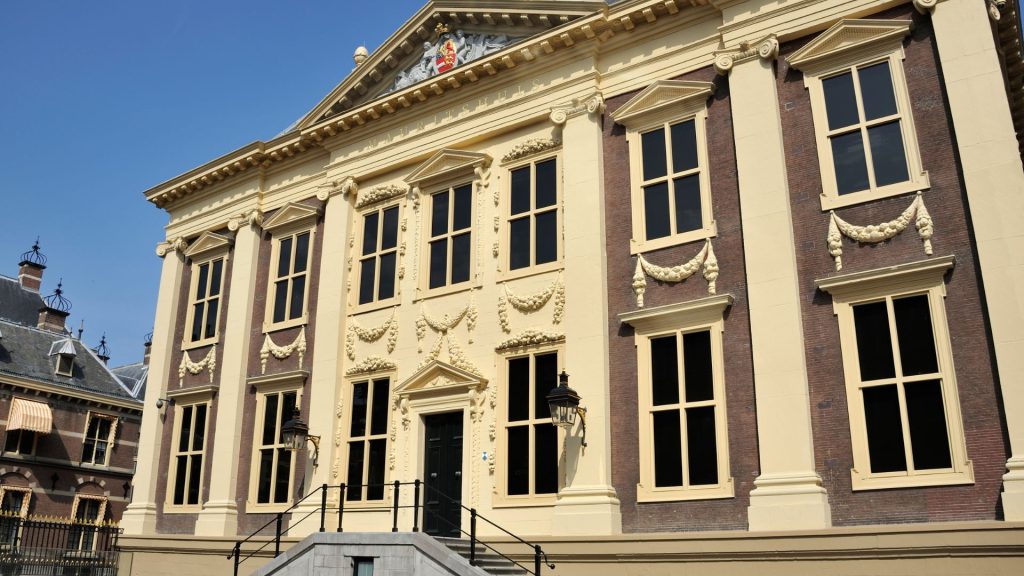Exploring the Historical Significance of the Bellamy Mansion Museum on Market Street in Wilmington, NC
Exploring the historical significance of the Bellamy Mansion Museum offers a fascinating insight into the intricate tapestry of Wilmington, North Carolina, and the legacy of the region’s antebellum society. Located on Market Street, the museum stands as a testament to the architectural grandeur and cultural wealth of its time. This mansion is not just a beautiful structure but a critical piece of Wilmington’s history, reflecting the city’s evolution and the complexities of its past.
Historical Background
The Bellamy Mansion was constructed between 1859 and 1861 by the prominent Bellamy family. The family, deeply involved in the cotton trade, played an essential role in the economic development of the region during the antebellum period. The mansion, designed in the Italianate style, features intricate details such as its grand columns and stunning woodwork that encapsulate the essence of 19th-century architecture.
Architectural Features
The Bellamy Mansion Museum showcases unique architectural elements that make it a standout structure. Here are some key features:
- Italianate Design: The building’s design reflects sophistication with its wide eaves, cornices, and decorative brackets.
- Spacious Interiors: With 22 rooms, the mansion reveals lifestyle trends of the wealthy elite during the 1800s.
- Preserved Elements: Many original features, including exquisite plasterwork and period furnishings, illustrate the artistry of the era.
The Role of the Mansion in the Community
Throughout its existence, the mansion has served multiple roles, impacting the Wilmington community significantly:
- Family Residence: Initially, the Bellamy family lived here, exemplifying the lifestyle of Southern aristocracy.
- Cultural Hub: The mansion frequently hosted gatherings, contributing to cultural discourse in the region.
- Historic Preservation: Since being transformed into a museum, it has played a vital role in educating visitors about Wilmington’s history, advocating for preservation efforts.
Educational Programs and Events
The Bellamy Mansion Museum offers various programs aimed at educating the public about the local history and heritage:
- Guided Tours: Visitors can explore the mansion’s rich history through comprehensive guided tours led by knowledgeable staff.
- Workshops and Lectures: The museum hosts events centered on topics like antebellum history, architecture, and Southern culture.
- Seasonal Events: Special events such as Christmas at the Bellamy and historic reenactments attract history enthusiasts and families alike.
A Local Landmark
The mansion has become a cherished landmark for both locals and visitors. Its significance as a cultural and historical resource solidifies its place in Wilmington’s tapestry. As a museum, it serves to engage the community, making history accessible and relevant.
How to Visit
For those interested in experiencing the Bellamy Mansion Museum, here are some practical details:
- Location: 503 Market Street, Wilmington, NC 28401
- Hours: Typically open from 10 AM to 5 PM Tuesday to Saturday and from 1 PM to 5 PM on Sundays. Check their website for seasonal variations.
- Admission: General admission fees help support the museum’s educational programs. Discounts may be available for students and seniors.
Further Exploration
Visitors can enhance their experience by exploring additional nearby historical sites, including:
The Bellamy Mansion Museum on Market Street in Wilmington, NC, offers a profound glimpse into the past while serving as an educational resource for future generations. Whether you are a history buff or just looking for an interesting day out, exploring this mansion promises a memorable experience that connects visitors to Wilmington’s rich heritage.
Architectural Styles and Features of the Bellamy Mansion
The Bellamy Mansion Museum, located at Market Street in Wilmington, NC, is a stunning example of antebellum architecture that captures the essence of the 19th-century American South. This magnificent structure is renowned for its unique architectural styles and features, which blend Gothic, Italianate, and Neoclassical elements. Visitors are often enthralled by the intricate designs and the historical significance they embody.
The Bellamy Mansion was built in 1859 by the wealthy planter and politician, John Bellamy. Constructed as a family home, this mansion showcases various architectural details that have earned it a place on the National Register of Historic Places.
The distinctive features of the Bellamy Mansion include:
- Gothic Elements: The mansion’s pointed arches and elaborate window designs exemplify Gothic Revival architecture. These elements speak to the romantic nostalgia that characterized the 19th century, recalling European influences.
- Italianate Characteristics: The Bellamy Mansion’s low-pitched roofs and wide eaves evoke the charm of Italianate styling, popular during the mid-1800s. The use of decorative brackets under the eaves adds a unique flair to the home.
- Neoclassical Details: The mansion’s grand columns and symmetry reflect classical elements, creating an air of sophistication. These details enable a transition into a more formal and stately design.
The mansion also features a three-story structure distinguished by a central hallway, which is a typical characteristic of antebellum homes. The layout showcases the open spaces that were favored during the period. In addition, the design cleverly incorporates local materials, including tabby concrete, which is a blend of lime, water, sand, and oyster shells. This sustainable building method was particularly popular in coastal regions of the South.
Another remarkable aspect of the Bellamy Mansion is its extensive wraparound porch. This feature not only serves aesthetic purposes but was also practical in the hot Southern climate, providing ample shade for relaxation and gatherings. Visitors can imagine the bustling social life that once took place in this inviting outdoor space.
The mansion’s interior is equally impressive. Here are a few notable features:
| Interior Feature | Description |
|---|---|
| Original Woodwork | Craftsmanship showcases intricate moldings and carvings, demonstrating the skill of local artisans at the time. |
| Fireplaces | Each room boasts exquisite fireplaces, adorned with beautiful tiles and mantels, which were both functional and decorative. |
| Stained Glass Windows | Several rooms feature stunning stained glass windows that add vibrant colors and artistic design to the interiors. |
Additionally, the mansion’s design reflects an understanding of the importance of light and airflow, common in Southern architecture. High ceilings and large windows invite natural light, while strategically placed transoms ensure cross-ventilation, creating a cool environment during the hot summer months.
The Bellamy Mansion also tells the story of the enslaved African Americans who helped construct and maintain the home. The mansion includes a dedicated exhibit that explores their contributions and experiences, giving visitors a fuller understanding of the historical context surrounding the site. This aspect adds to the depth and richness of the museum experience.
During your visit to Wilmington, exploring the Bellamy Mansion Museum is a must. The combination of its architectural beauty and historical narrative makes it a significant landmark worth learning about. For more information on tours, events, and exhibits, check out the official website of the Bellamy Mansion Museum at www.bellamymansion.org.
The Bellamy Mansion stands as a testament to the architectural styles of its time. Its Gothic, Italianate, and Neoclassical features showcase a unique blending of influences, while its interior highlights the artistry of craftsmanship. When wandering through its halls, visitors can truly appreciate the intricate details and the rich history captured within its walls.
The Role of the Bellamy Mansion in Wilmington’s Cultural Heritage
The Bellamy Mansion Museum, located on Market Street in Wilmington, North Carolina, plays a vital role in the cultural heritage of the city. This historic site not only stands as an architectural marvel but also serves as a cultural hub, showcasing the rich history, art, and life of Wilmington’s past. Built in 1859, the mansion reflects a mix of architectural styles and is one of the finest examples of antebellum architecture in the South.
One significant aspect of the Bellamy Mansion is its historical significance. As the home of the prominent Bellamy family, it provides insights into the lives of its residents, showcasing the social and economic dynamics of the era. The mansion features original furnishings and artifacts that tell the story of the family’s life and their role in the development of Wilmington. By preserving these elements, the museum presents a tangible link to the past for visitors and scholars alike.
Additionally, the Bellamy Mansion serves as a venue for educational programming and community outreach. The museum regularly hosts events, workshops, and tours designed to engage the public and enhance their understanding of local history. These initiatives help foster a sense of community and encourage a deeper appreciation for Wilmington’s cultural heritage.
Architectural Significance
The Bellamy Mansion is a remarkable example of the blend of Greek Revival and Italianate architectural styles. Its grand façade, intricate woodwork, and beautifully landscaped gardens contribute to its aesthetic appeal. The mansion’s design features include:
- Two and a half stories: The structure is tall and imposing, standing out within the historic district.
- Fascinating brickwork: The brick exterior showcases craftsmanship from the 19th century.
- Symmetrical windows: Each window reflects a perfect balance, enhancing its classic look.
- Exquisite interiors: The rooms feature period-specific furnishings, art, and decor, providing a glimpse into the opulence of the time.
The Bellamy Mansion’s gardens also contribute to its charm. Designed in the 19th century, these gardens are a reflection of the Victorian era and serve as a peaceful retreat for visitors. Walking through the lush landscapes, one gains an appreciation for both nature and history.
The Role of the Museum in Cultural Heritage
The museum’s role extends far beyond merely preserving artifacts. It is an active participant in celebrating and educating the community about Wilmington’s diverse history. Some key functions include:
- Curated Exhibits: The museum regularly updates exhibits to showcase different aspects of Wilmington’s history. From Civil War artifacts to displays about local artists, these curated experiences invite visitors to explore various narratives.
- Educational Programs: Workshops and guided tours are offered for both school and community groups, aimed at various age levels to engage learners in the history of Wilmington.
- Community Events: The museum hosts seasonal events, celebrations, and historical reenactments that draw visitors from near and far, enhancing community spirit.
Moreover, the museum acts as a resource for historians and researchers. With an extensive archive of documents and artifacts, the Bellamy Mansion plays a pivotal role in preserving and interpreting local history. Researchers and students can access valuable information about not just the mansion, but also the broader cultural and social history of Wilmington.
Visiting the Bellamy Mansion Museum
For those interested in delving into Wilmington’s rich history, the Bellamy Mansion Museum is an essential stop. Located at Bellamy Mansion Museum, it offers guided tours, self-exploration options, and various programs tailored for all ages. Visitors can expect to spend anywhere from one to two hours exploring the mansion and its surrounding grounds.
| Hours of Operation | Admission Prices | Contact |
|---|---|---|
| Monday – Saturday: 10 AM – 5 PM Sunday: 1 PM – 5 PM |
Adults: $10 Students/Seniors: $8 Children under 12: Free |
info@bellamymansion.org Phone: (910) 251-3700 |
The Bellamy Mansion Museum is more than just a historic house; it stands as a tribute to Wilmington’s past and a beacon for future generations. By engaging in preservation efforts and community education, the museum ensures that the cultural heritage of Wilmington, NC, continues to thrive.
Upcoming Events and Educational Programs at the Bellamy Mansion Museum
The Bellamy Mansion Museum, located on Market Street in Wilmington, NC, is a cultural gem that offers an array of upcoming events and educational programs designed to engage visitors of all ages. This historic site, renowned for its preservation of both architectural beauty and local history, invites the community to immerse themselves in enriching experiences that inspire learning and appreciation of Wilmington’s cultural heritage.
Throughout the year, Bellamy Mansion hosts a variety of events that highlight different aspects of Southern history, art, and architecture. Every month, the museum curates special programming that provides insight into the lives of the people who inhabited the mansion and their contribution to the rich tapestry of Wilmington.
Some of the most anticipated upcoming events include:
- Living History Program: Offering a first-hand glimpse into the past, this program features actors portraying historical figures from Wilmington’s history. Visitors can interact with the characters and ask questions, making the experience truly immersive.
- Garden Tours: Hosted in the beautifully restored gardens of the mansion, these tours provide insights into Victorian gardening practices and the types of plants that were popular during the 19th century.
- Lecture Series: Delve into various topics related to history, architecture, and the arts. Local historians and scholars often share their research on subjects that encompass both the local area and broader national narratives.
- Family Art Workshops: Designed for children and families, these hands-on workshops allow participants to explore different artistic techniques inspired by the mansion’s intricate design and historical themes.
- Holiday Events: Celebrate the season with special events during the holidays, including festive decorations in the mansion, seasonal music performances, and traditional holiday storytelling.
One of the highlights of the year at the Bellamy Mansion is the annual Ghost Walk, an event that combines local legends with ghostly tales that have influenced Wilmington’s history. Participants can stroll through the mansion and surrounding grounds under the light of the moon and learn about the hauntings that have been reported over the years.
The museum also regularly hosts educational workshops tailored for educators and students. These programs are designed to tie in with local educational standards and facilitate hands-on learning. Examples include:
| Workshop Title | Target Audience | Date | Registration Fee |
|---|---|---|---|
| Preservation in Practice | Educators | March 15, 2024 | $20 |
| History Detectives | 4th-6th Grade | April 10, 2024 | $15 |
| Art in Nature | Families | May 22, 2024 | $10 per participant |
These workshops not only foster creativity but also provide educators with resources to enhance their curriculum through engaging historical content. By focusing on interactive learning, the Bellamy Mansion helps to cultivate a sense of curiosity about local history among students.
The museum encourages community engagement and regularly seeks volunteers for various events. Volunteering at the Bellamy Mansion is not only a great way to give back to the community but also an opportunity to learn from the rich history of Wilmington. Interested individuals can find more information on how to get involved on the museum’s website.
Whether you’re a history buff, an art lover, or a family looking for educational outings, the Bellamy Mansion Museum on Market Street in Wilmington, NC, offers something for everyone. With its dynamic programming and commitment to education, the museum continues to be a vital part of Wilmington’s cultural landscape. Mark your calendar, gather your family and friends, and experience the rich heritage of this incredible historic site!
Visitor Experiences and Tips for Exploring Market Street, Wilmington, NC
Market Street in Wilmington, NC, is a vibrant area that invites visitors to explore its rich history, stunning architecture, and dynamic culture. This bustling street serves as a hub for various attractions, including shops, restaurants, and significant historical sites. If you plan to visit this charming destination, here are some essential experiences and tips to enhance your exploration.
Experiences to Enjoy on Market Street
As you wander down Market Street, make sure to immerse yourself in the local experiences:
- Bellamy Mansion Museum: A historical gem, the Bellamy Mansion Museum showcases 19th-century architecture and offers guided tours that delve into the lives of Wilmington’s elite during the antebellum era. The gardens are an ideal spot for photos, especially in spring.
- Shopping: Market Street boasts a mix of local boutiques and chain stores. Check out the unique shops for handmade jewelry, art pieces, and vintage items. Don’t forget to grab a souvenir!
- Dine Local: Indulge in Wilmington’s culinary scene. Market Street features various eateries, from seafood to southern comfort food. Popular choices include The New Hanover Regional Medical Center, known for its fresh catch, and The Station, where you can savor BBQ in a cool atmosphere.
Getting Around Market Street
Market Street’s layout is easy to navigate, whether you’re on foot, cycling, or using a vehicle. Public transportation options like Wave Transit are available for those who prefer not to drive. However, self-parking and street parking are also accessible with reasonable rates. Walking allows you to soak in the sights at your own pace.
Must-Visit Nearby Attractions
Exploring Market Street means you have nearby attractions that you won’t want to miss:
- Historic District: Just a stroll away, the Wilmington Historic District is filled with antebellum homes, cobblestone streets, and picturesque scenery. Take a historic walking tour to uncover fascinating stories from the past.
- Riverwalk: The scenic Wilmington Riverwalk offers stunning views of the Cape Fear River. It’s a perfect spot for a leisurely walk or a romantic sunset dinner.
- Cape Fear Museum: Dive deeper into the area’s history by visiting the Cape Fear Museum, where you can find artifacts and exhibits showcasing Wilmington’s heritage and culture.
Visitor Tips for a Smooth Experience
To make the most of your visit to Market Street, consider the following tips:
| Tip | Description |
|---|---|
| Plan Your Visit | Weekdays tend to be less crowded than weekends, making it easier to explore attractions and dine at popular restaurants. |
| Dress Comfortably | Market Street is best explored on foot, so wear comfortable shoes to stroll through its scenic spots. |
| Engage with Locals | The residents are friendly and often have great recommendations for hidden gems and local favorites. |
| Check Local Events | Look for local festivals or events happening during your visit. These experiences can enhance your understanding of Wilmington’s culture. |
Market Street in Wilmington, NC, is brimming with experiences waiting for you to discover. From exploring the historic Bellamy Mansion Museum to savoring delicious cuisine, your visit promises unforgettable memories. Embrace the charming atmosphere, and don’t hesitate to engage with locals while uncovering this southern gem.
Conclusion
The Bellamy Mansion Museum on Market Street in Wilmington, North Carolina, serves not just as a museum but as a treasured window into the past. It stands as a testament to Wilmington’s rich historical tapestry, reflecting significant events and cultural shifts from centuries gone by. The mansion itself is an emblem of historical significance, housing stories from a period that shaped both the local and national narrative.
Visitors taking a tour will be captivated by the striking architectural styles and features of the Bellamy Mansion. Constructed in 1859, the mansion embodies a beautiful blend of Greek Revival and Italianate architectural styles. Its grand columns, intricate wooden moldings, and expansive verandas translate into a breathtaking visual experience that invites exploration. Every element, from the double doors to the exquisite interiors, tells tales of craftsmanship and artistry that were prominent during its construction. These architectural marvels make the Bellamy Mansion more than just a building; they breathe life into Wilmington’s architectural heritage, inviting visitors and historians alike to appreciate its artistic contributions.
Furthermore, the Bellamy Mansion plays a vital role in preserving and promoting Wilmington’s cultural heritage. It acts as a beacon, educating the public about the complexities of the antebellum South, including themes of slavery and societal structure that were prevalent during that era. The museum’s collection, which includes original artifacts, photographs, and documents, provides a poignant reminder of the diverse stories that intertwine within Wilmington’s narrative. Each exhibit is carefully curated to facilitate understanding and spur discussions about the larger implications of the past on today’s society.
Equally vital to its mission, the Bellamy Mansion Museum actively engages with the community through a multitude of upcoming events and educational programs. Whether it’s through lectures, interactive workshops, or family-friendly activities, the museum creates an engaging environment that highlights historical context while nurturing an appreciation for heritage among younger generations. Visitors can look forward to seasonal festivals that celebrate local traditions, historical reenactments, and art shows that provide both entertainment and education. These events draw in diverse crowds, uniting people from different walks of life under the umbrella of shared history.
Exploring Market Street as a whole offers visitors a rich tapestry of experiences that further enhance a visit to the Bellamy Mansion. Known for its picturesque charm, vibrant shops, and delightful eateries, Market Street is the perfect backdrop for a day of historical exploration. After enjoying a tour of the mansion, visitors can wander through serene parks, charming boutiques, and savory restaurants that line this famous street, adding layers of enjoyment to their overall experience. Local hotspots like JohnnyLukes KitchenBar and The Basics provide delicious, culturally-inspired dishes that cater to a range of palates. For an added flair, many of these establishments offer historic settings that resonate with the ambiance of the surrounding area.
To make the most of your visit, it’s advisable to plan ahead. The Bellamy Mansion welcomes guests year-round, but checking the museum’s calendar for special events can enhance your experience. Consider participating in guided tours which provide deeper insights, and if time allows, explore the nearby attractions that enhance your understanding of Wilmington’s rich history. Don’t forget to ask museum staff about any ongoing exhibitions or programs that may pique your interest. A little planning will go a long way toward enriching your experience on Market Street.
While the Bellamy Mansion Museum stands proud, the essence of Wilmington’s Market Street and its historical significance cannot be overlooked. Each visit reinforces the importance of preserving our past, ensuring that future generations appreciate the intricate stories that define our communities. Whether you’re a local resident or a tourist, the Bellamy Mansion is an incredible starting point for diving into Wilmington’s vibrant history, making it a must-visit destination. Its legacy resonates not only through its walls but also in the hearts of visitors who walk its grounds, reminding us of the importance of understanding where we come from as we navigate the complexities of the present and future.








